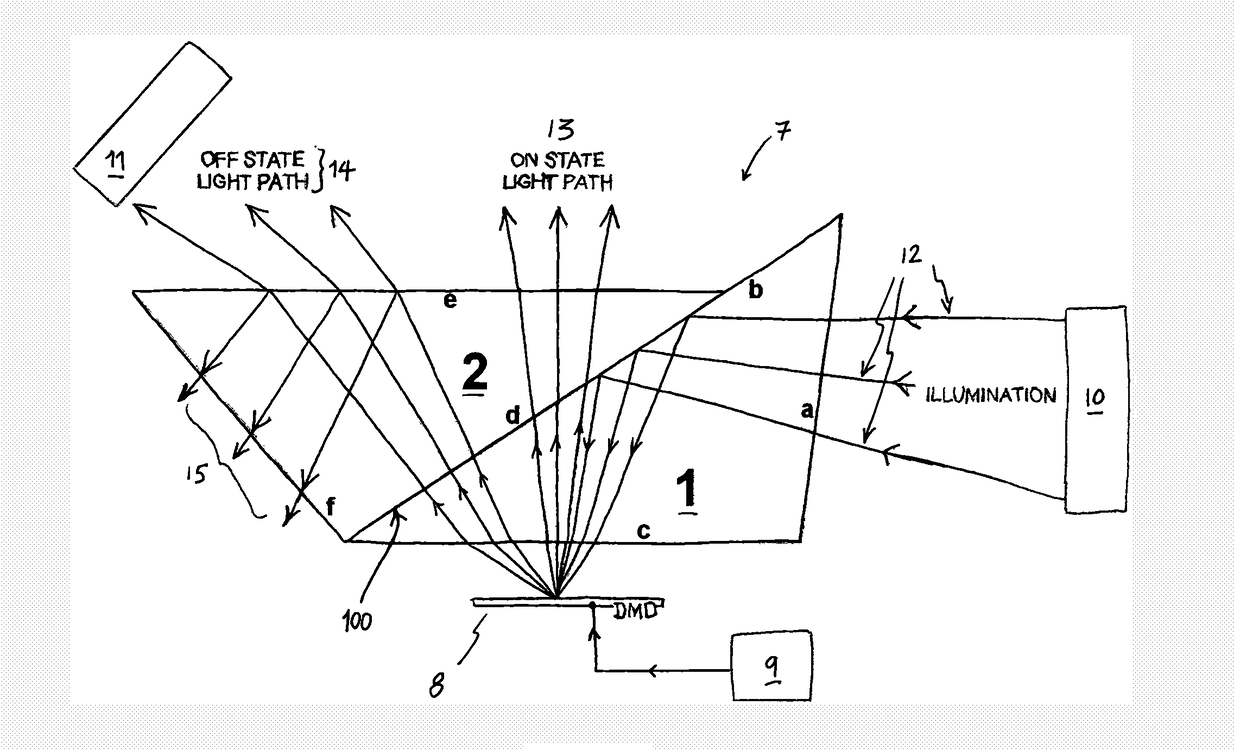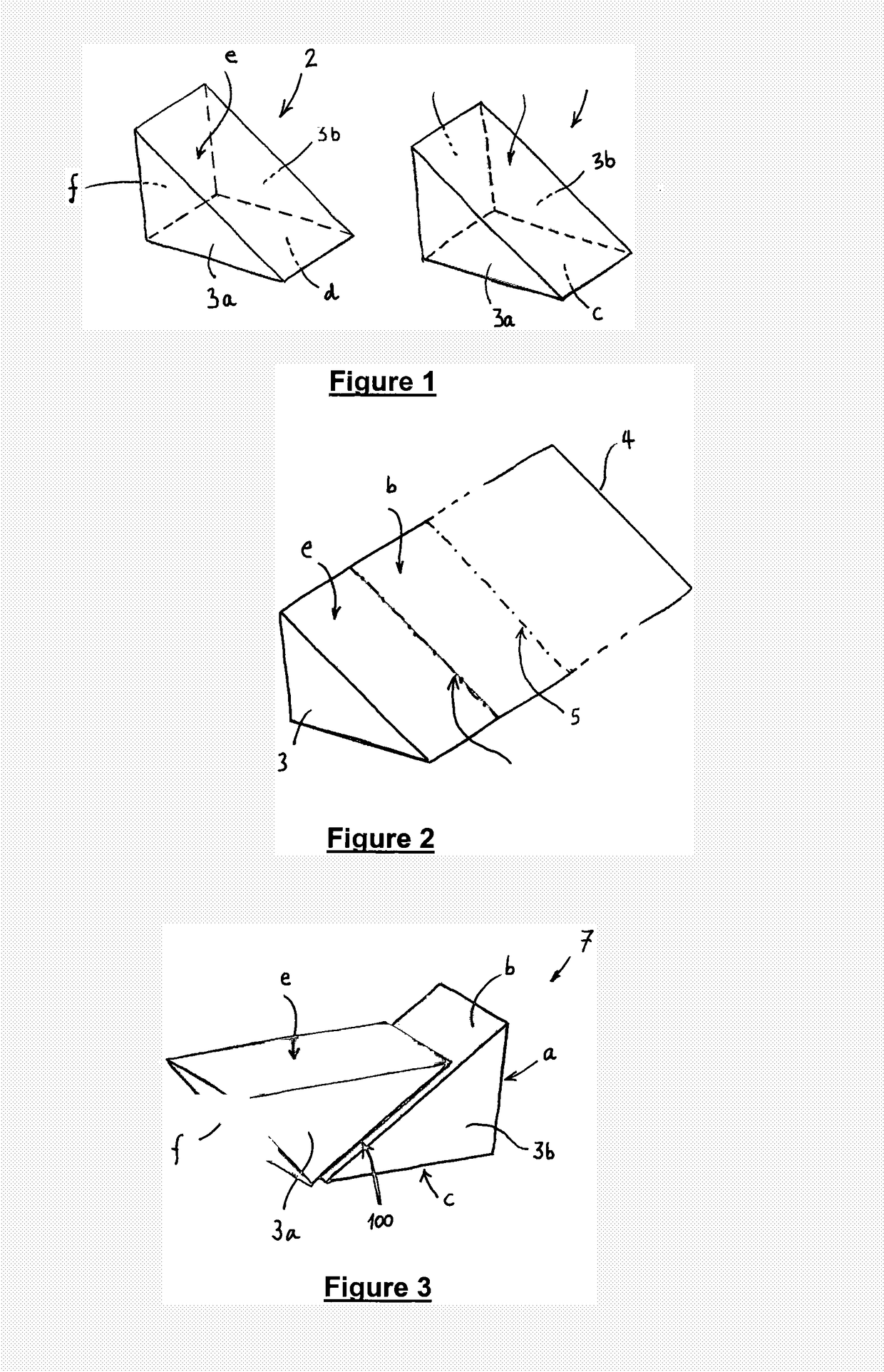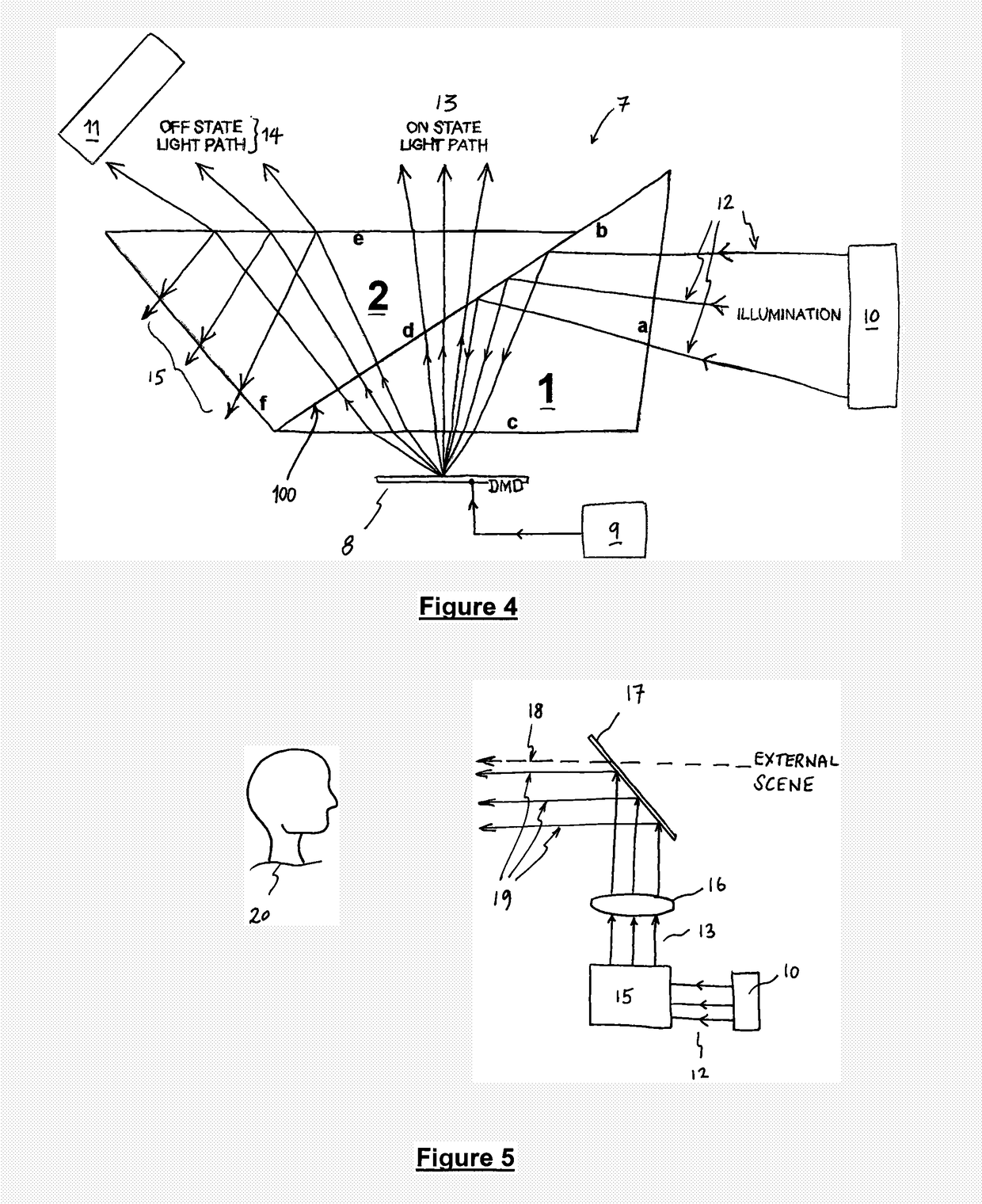Dmd projector with tir prism
- Summary
- Abstract
- Description
- Claims
- Application Information
AI Technical Summary
Benefits of technology
Problems solved by technology
Method used
Image
Examples
Embodiment Construction
[0038]In the drawings, like items are assigned like reference symbols.
[0039]FIG. 1 illustrates two substantially identical triangular prism pieces (1, 2). Each prism piece is a triangular prism having three non-base surfaces (a, b, c; d, e, f) extending between a respective parallel pair of triangular, substantially congruent “base” surfaces (3a, 3b). Each prism piece has the following three internal angles of 97.2°, 49.5° and 33.3°. In each prism piece, a smallest of the three non-base surfaces (a, f) joins the largest non-base surface (b, e) at an internal angle of 49.5°, and joins the remaining (second-largest) non-base surface (c, d) at an internal angles of 97.2°. Thus, in each prism, the largest and second largest non-base surfaces meet at an internal angle of 33.3°. It will be appreciated that these angles will change if the refractive index of the material of the prism is changed.
[0040]In this example, each prism piece is made from the common Schott borosilicate glass N-BK7,...
PUM
 Login to view more
Login to view more Abstract
Description
Claims
Application Information
 Login to view more
Login to view more - R&D Engineer
- R&D Manager
- IP Professional
- Industry Leading Data Capabilities
- Powerful AI technology
- Patent DNA Extraction
Browse by: Latest US Patents, China's latest patents, Technical Efficacy Thesaurus, Application Domain, Technology Topic.
© 2024 PatSnap. All rights reserved.Legal|Privacy policy|Modern Slavery Act Transparency Statement|Sitemap



